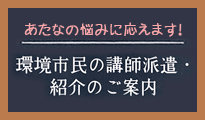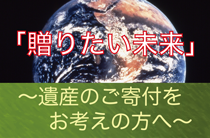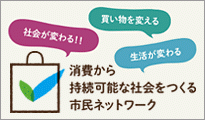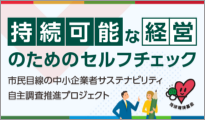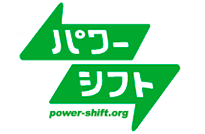21世紀、地球を、地域を、生活を、持続可能な豊かさに
CEF and the fight against Greenwash
カテゴリ: CEF English news | 更新日:
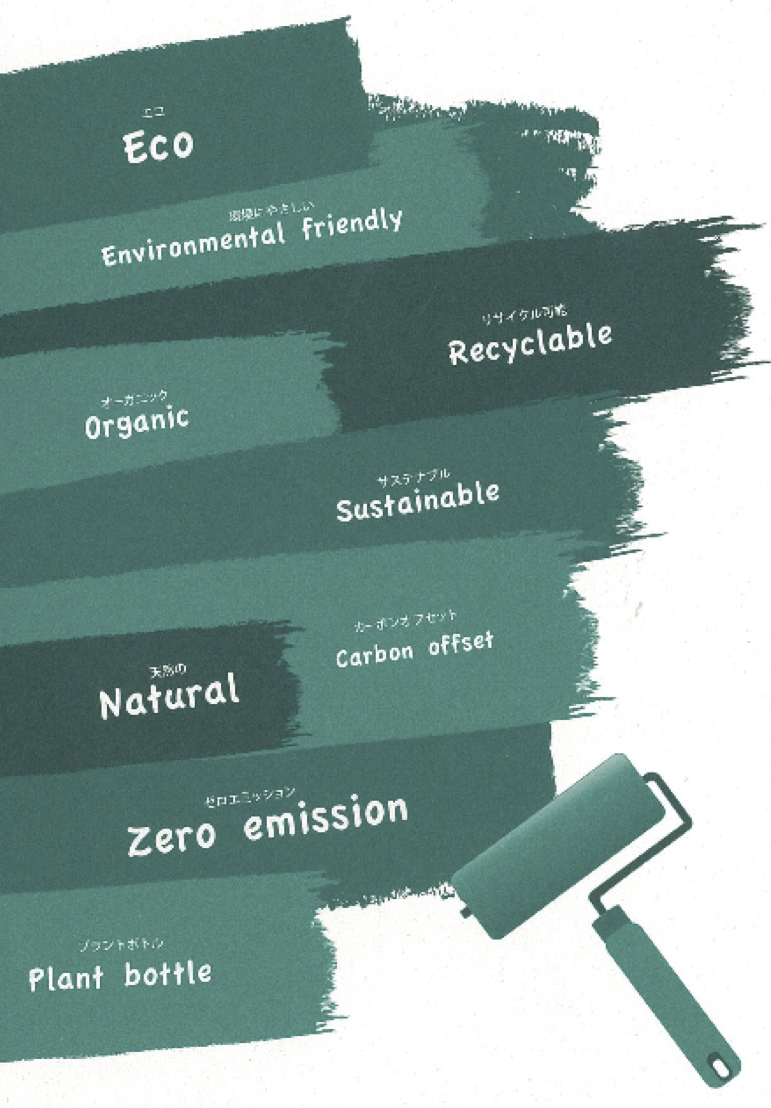 What is Greenwash? This keyword is rising in public consciousness in Japan but many still don’t know about this issue. The word comes from “whitewash”, meaning to try to hide an unpleasant truth like repainting an old building with nice new white paint. In the case of greenwash, companies try to hide their poor environmental practices with an attractive “green” or “eco-friendly” image.
What is Greenwash? This keyword is rising in public consciousness in Japan but many still don’t know about this issue. The word comes from “whitewash”, meaning to try to hide an unpleasant truth like repainting an old building with nice new white paint. In the case of greenwash, companies try to hide their poor environmental practices with an attractive “green” or “eco-friendly” image.
This can range from vague terms like “eco”, “healthy”, or “natural” and it also includes the use of nature images in advertising to suggest that a product is natural or not harmful. We’ve all seen such products, like a bottle of shampoo covered with leafy imagery and these key words, even if we don’t always stop to consider what’s really in the bottle.
The Citizens Environmental Foundation has been hard at work raising awareness about this issue in the public and in the corporate sector. From 2011 we began to research how other countries were handling greenwash.
The UK was an early leader in the regulation of advertising. Starting in the 1960s the government began to create laws on what could or could not be in advertising regarding race and gender, and in the 1990s, the environment. Furthermore, an independent organization, the ASA (Advertising Standards Authority), was established from members of advertising companies to help increase the quality and honesty of advertising in the UK.
The ASA is very powerful. When a company wishes to advertise, it sends the new commercial to the organization for review. If that ad uses greenwash or makes other unclear claims, the ASA will recommend that it be remade. When the ASA thus points out the use of greenwash, most companies realize their mistake and redo the ad, or at least they give up on making a false claim. However, if that company decides to release the commercial anyway, the ASA lobbies members of the same industry to pressure that company to stop. If this doesn’t work, it will then speak to the government and take legal action against the company.
This is a rare case because most companies realize that they can’t win against the ASA. Furthermore, many companies understand that good, honest advertising that has been approved by the ASA is more effective that greenwash. In the short term, greenwash can improve the image of a company, but in this age of social media, false claims are quickly exposed and criticized. Thus, greenwash starts as an attempt to improve the company image, but usually damages it when the public loses trust.
So what’s the situation in Japan? Unfortunately we do not have a powerful body like the ASA and Japanese consumers aren’t much aware of greenwash terms like “renewable” and “natural”. The Ministry of the Environment publishes a guidebook on correct advertising, but it is complex and not useful because it was made without the input of the advertising companies that would use it.
The CEF and a working group of academics, NGOs, consumer organizations and advertising companies have combined forces to produce several guidelines on greenwash.
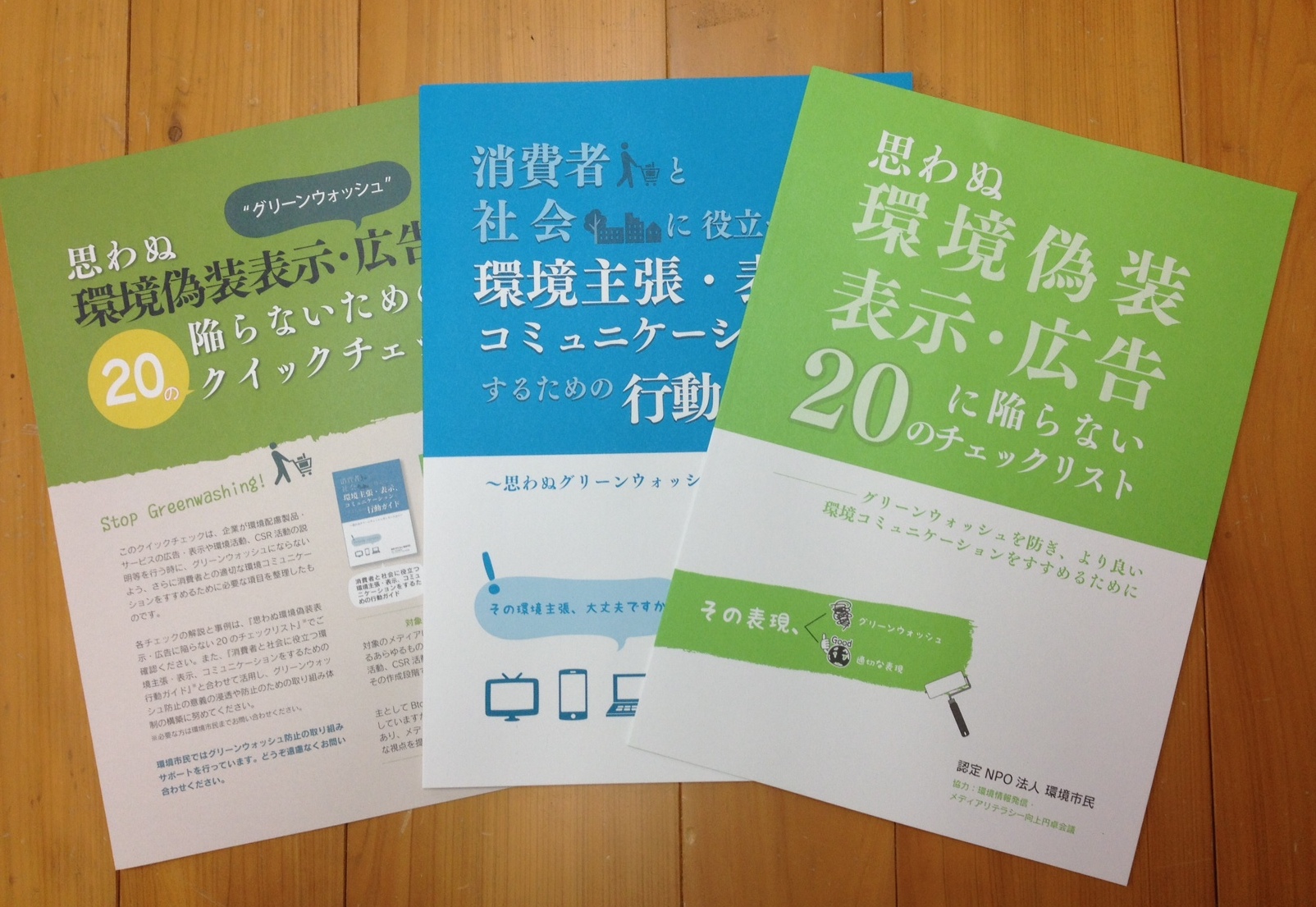
First, we published a checklist called “20 Points Quick Check to Avoid Unexpected Greenwash Camouflage in Advertising”. The checklist questions ask the advertiser whether his new ad uses vague terms like “reusable” without explaining them clearly or uses natural imagery unrelated to the product to improve its image. If the reader can check every point, the ad is likely free of greenwash.
Our second guideline is an expansion of the first pamphlet and it provides many examples of greenwash. For instance, a popular shampoo with the translated name of “The Story of Plants” is using the idea that anything made of plants must be natural and whatever is natural must be healthy. That same shampoo, however, is full of petroleum products and strange chemicals, not just “natural” plant derivatives. It is using one ingredient’s good image to hide the others.
Our third book is more about building good corporate governance to prevent the use of greenwash. It is called the “Green Claim Conduct Guideline to Communicate with Consumers and Society”. It also contains many examples of greenwash and a survey of greenwash terms. We asked a thousand consumers what they thought different greenwash claim words meant.
For instance, we asked what consumers thought “eco-friendly” meant on a pair of pants. The results were diverse, as follows:
51.6% – recycled material
30.2% – easy to recycle fiber
18.4% – was made with renewable energy or reduced energy
17% – related to cool biz or warm biz (Japan’s effort to use less air conditioning at work)
Which one is it? We don’t know because the company hasn’t been clear and the word “eco-friendly” has lost power. This is the real danger of greenwash: false claims by bad companies create mistrust in consumers and then even the best “green” companies start to lose trust too. Without a clear understanding of what is actually sustainable and good for the planet, we can never create a green economy and sustainable society. While consumers need to educate themselves on this issue, it is up to companies to be honest and clear about their environmental impacts.
At present the CEF is using these guidelines to educate companies in our seminars but there is much work to be done and public awareness still needs to rise. So ask yourself: where do you see greenwash in your life? Let’s expose it and support only the truly green companies for a better future.
ーPerrin Lindelauf
・If you have further question on this project, please contact us(life@kankyoshimin.org)


